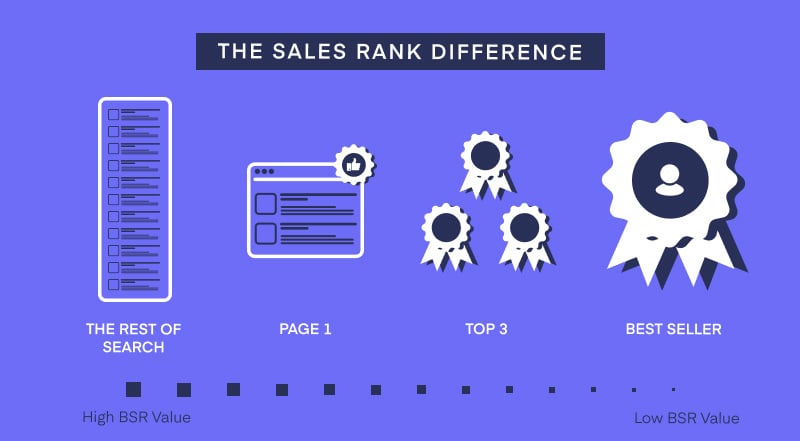What Is Sales Rank On Amazon
Curious about Amazon sales rankings? Ihor Dubovetskyi of Profit Whales shares valuable information in this guest post. The Amazon sales rank, also referred to as the Best Seller Rank (BSR), is a score awarded to all Amazon products by the A10 algorithm. It is calculated with a complex formula that is unavailable to the general public. What we know for sure is that the algorithm takes into account certain variables related to a particular product and its performance on Amazon. And they all have to do with sales: Here are examples of BSR for two competitors from the Amazon page one search results for the search query bow: Since BSR is awarded to every product of every seller, it's a competitive metric. This means that anyone can measure how well their product is faring compared to the rest of their market. Bear in mind that there are 2 BSR values: While it would certainly be an excellent ego checkbox tick, getting a number one BSR in a general category wouldn't improve sales. Very few shoppers buy the first item they see when jumping to a category homepage. Instead, you should pay attention to the subcategory BSR. Basically, this number lets you see the RESULTS of your recent selling efforts compared to your historical results - as well as the efforts other sellers in your market put into their business. Let us break this one down with an example. Imagine your potential customer types a search query on Amazon. As we all know, the Amazon A10 search algorithm takes hundreds of variables into consideration in the split seconds after a customer dials in her search query: And then there are sales. Did the customers buy your product in the past? Even if what you sell may look weird, have a stupidly high price, display 30 odd reviews where competitors boast 3000… if people paid their money, it MUST be worth it, right? And this is no small deal. Previous sales history (and recent history at that) has a huge impact on the position a product will get on the Amazon search results page. Real values are kept secret by Amazon, of course - but some exploring sellers believe that good historical sales comprise up to 30% of the resultant search query score. Does the latter variable sound familiar? Well, it should, because that IS what BSR is calculated with. A good BSR is an indication that one of your product's major parameters (historic sales) is in its top form. It helps you with your current sales, along with the solid listing, keyword-rich, and well-orchestrated PPC campaigns (like the ones we at Profit Whales make with our Zero to Hero software), sufficient inventory, and positive reviews. On the other hand - a high Amazon sales rank value (meaning a bad position) is still a useful gauge. Like all numbers that incorporate a certain population, it has a bell-shaped curve. Most sellers who do okay with their sales will find themselves somewhere in the middle. So If you are, say, a #412 in your subcategory - is there much point in looking at how #411 goes about its business and what they do to get more sales? No. But if you try and dissect what the top three sellers are doing (What kind of photos do they use? What are their bullet points? What complementary products do they sell together? etc.) and try to take their best practices, then you may one day see your BSR be #350. It is this jump in Amazon sales rank that will tell you that you did something right, and you should continue doing that. A small hint that an Amazon sales rank should really teach all of us sellers is this: BSR considers only the number of sales. Not keyword ranking, not inventory, not PPC budget. Just sales. Get more sales, and you will climb higher up all Amazon ranks. And those do not necessarily have to come from the Amazon search console. Links from your company site that go to your Amazon product page and result in sales on Amazon can also help boost your BSR.


Why Do Sellers Bother With BSR?

Does a Good Amazon Sales Rank Benefit Me?

Can a Bad BSR Cause Problems?
The Bottom Line
What Is Sales Rank On Amazon
Source: https://www.ecomengine.com/blog/amazon-sales-rank
Posted by: gregoryleighte47.blogspot.com

0 Response to "What Is Sales Rank On Amazon"
Post a Comment